Despite how hostile to life some parts of the Earth’s continents are, humanity has enthusiastically endeavored over the course of millennia to establish at least a toehold on each of them. Yet humanity has barely ventured beyond the surface of the oceans which cover around three-quarters of the planet, with human activity in these bodies of water dropping off quickly along with the fading of light from the surface.
Effectively, this means for all intents and purposes we have to this day not explored the vast majority of the Earth’s surface, due to over 70% of it being covered by water. As an ocean planet, much of Earth’s surface is covered by watery depths of multiple kilometers, with each 10 meters of water increasing the pressure by one atmosphere (1.013 bar), so that at a depth of one kilometer we’re talking about an intense 101 atmospheres.
Over the past decades, the 1985 discovery of Titanic’s wreck approximately 3.8 kilometer below the surface of the Atlantic, the two year long search for AF447’s black boxes, and the fruitless search for the wreckage of MH370 despite washed-up remnants have served as stark reminders of just how alien and how hostile the depths of the Earth’s oceans are. Yet with both tourism and mining efforts booming, will we one day conquer the full surface of Earth?
A Watery Grave
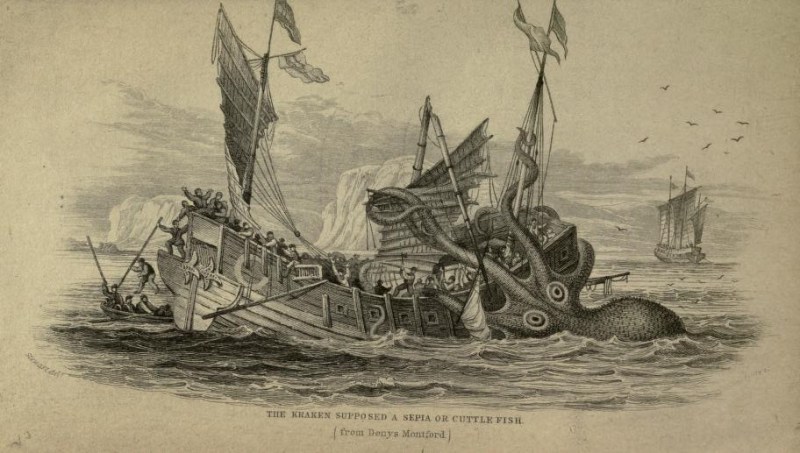
For most of human history, the oceans have been treated as essentially inaccessible, almost as if nothing that happens beyond a few hundred meters depth and the cessation of any fish species we might be interested in. Even so, long before the advent of deep-sea exploration, mythology has been rife with stories that in many cases contains at least a grain of truth. Much of these stories revolve around the sperm whale, its fantastical dives to depths of over 2 km and both their stomach contents and scars on their skin that seems to suggest the presence of enormous cephalopods, including the famous kraken that’d rise from the depths to drag entire ships back with it.
It wasn’t until a few hundred years ago that the first attempts were being made to determine the generally presumed to be unfathomable depths of the oceans at various points, along with the species that inhabit these depths. According to an 1843 theory proposed by Edward Forbes – called the Azoic hypothesis – the presence of life would diminish continuously, until the complete cessation of any life at a depth of 300 fathoms (550 meters). This was refuted by Michael Sars in 1850, who found life thriving at a depth of 800 meters, thus confirming papers published by Antoine Risso decades prior on deep-sea catches by fishermen.
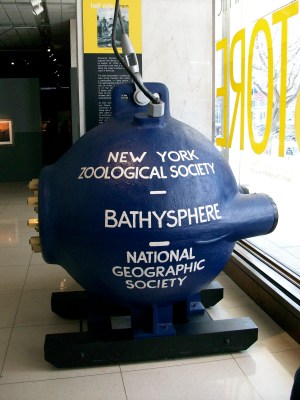
Up till that point, deep-sea exploration was performed solely by essentially dragging stuff out of it using nets and similar fishing implements, but this changed when in 1930 William Beebe and Otis Barton were the first to dive to a depth of 435 meters in their Bathysphere: a spherical, pressure-resistant vessel. In 1934 they’d set a new record with a depth of 923 meters, during which dives they observed the life visible just beyond the vessel’s portholes.
Lowered into the ocean by the ship that carried it, this vessel that may have appeared crude at first glance was nevertheless quite refined for the time, with a rudimentary life support system using cylinders of compressed oxygen to replenish the oxygen breathed in by the crew, and pans of soda lime and calcium chloride installed inside to scrub CO2 from the air after it had been exhaled.
The record set by the Bathysphere would remain until 1949 when Barton dove to 1,400 meters with the Benthoscope. At this point the race to develop ever better submersibles was fully on, and bathyscaphes (self-propelled, free-diving submersibles) appeared on the scene by the late 1940s. Being free-diving, these vessels do not require a massively long and heavy cable to winch them into and back out of the water, enabling much deeper dives.
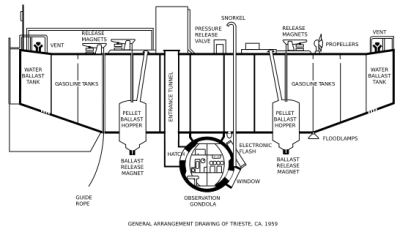
Redrawn from U.S. Naval Historical Center Photograph NH 96807, General arrangement drawing of Trieste, ca. 1959.
By 1960, the bathyscaphe Trieste – piloted by Jacques Piccard and Don Walsh – reached the deepest known point on Earth’s surface: the Challenger Deep, located within the Mariana Trench of the Pacific Ocean. After some refinements to the depth measurements to take the alien conditions into account, it was determined that they had reached a depth of about 10,916 meters. Unexpectedly, both men were still able to communicate with the surface support ship USS Wandank, via the sonar/hydrophone voice communication system. Because of the immense distance, it took about seven seconds for a message to travel between the surface and the floor of the Challenger Deep.
Beyond Mythology
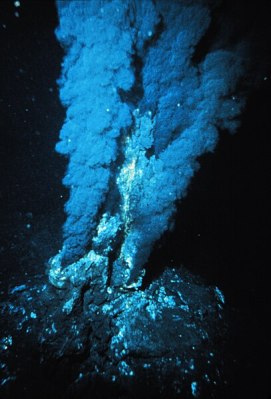
Along with the development of these newer and better submersibles, the mythology surrounding the depths of the ocean evaporated. What the photographs and videos recorded by both manned and unmanned deep-sea exploration vessels showed was a world completely devoid of the light which we as land-dwelling creatures hold for self-evident. In these depths, the electromagnetic radiation from our Sun does not penetrate, leaving everything in complete darkness. Even so, life found a way to create thriving ecosystems in an environment where only oppressive darkness and cold reign.
From deep-sea fish, to chemosynthetic organisms that live around hydrothermal vents and which use hydrogen sulfide synthesis as an alternative to the photosynthesis that powers life where the Sun’s rays still reach, the exploration of these hitherto unexplored depths have uncovered organisms and ecosystems that have changed our fundamental understanding of how life has formed and thrived on Earth. Even so, with how restricted our access is to these locations, scientific study is ongoing, with continuous new discoveries.
Along with the dissolution of the mythical depths came the inevitable push towards exploitation, both in the form of tourism and the mining of resources. However, what differentiates the lure of the untamed wilderness of Africa, America and other regions that were exploited in this manner over the past centuries, from the deep seas is that the latter might as well be the icy surface of Jupiter’s moon Europa. With no air to breathe, temperatures just above freezing and crushing pressures, even the challenge of climbing Mount Everest would seem to be a leisurely stroll in comparison.
With this in mind, can manned exploration of the depths ever be made safe enough for casual tourism, and will remotely operated vehicles (ROVs) be the way forward for deep sea mining?
Alien Worlds
An inescapable truth remains that the human body can only be kept alive at these depths through rather extreme measures. This has led within the off-shore industry to increasingly replace divers with underwater ROVs, These are remotely controlled robotic systems which can be either connected to a surface vessel with an umbilical cable that provides power and communication, or function with some level of autonomy. Beyond the obvious lack of a pressure vessel, these ROVs can be designed for any depth and any task, making them exceedingly versatile while keeping operators safely at atmospheric pressure in a cozy control room.
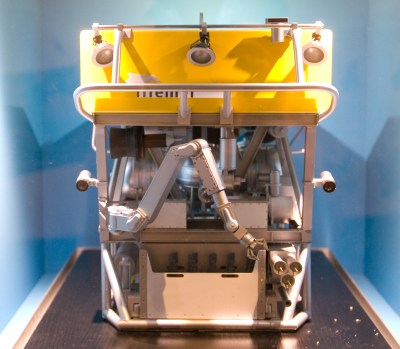
A good illustration of the complexity of deep-sea tourism is the world-famous Titanic wreck. Despite the rough location of where the ship had sunk having been known within moments of the ship’s demise and broadcast around the world, it would nevertheless take many decades before a mission could be funded and navigate around in the pitch dark before stumbling over the wreck. Even then, Robert Ballard’s mission to Titanic came at the tail-end of a US Navy funded mission to map the wreck of the USS Scorpion.
Since that time, tourism trips to the wreck have become commonplace, offering people with well-filled pockets a chance to see the wreck with their own eyes, as well as land on the wreck’s deck, steal artefacts and litter. With the wreck being in international waters, these dives are essentially unregulated, and legal battles about ownership of the wreck remain, even as the tourist trips have accelerated the decay of the wreck. Perhaps ironically, a recent tourist trip to the wreck in a submersible called the Titan, owned by a company called OceanGate, resulted in the carbon fiber pressure hull failing.
The subsequent implosion shredded the submersible and instantly killed its five occupants, making it the first lethal submersible accident in many years. In addition to adding a second famous debris field alongside that of the Titanic, this event served to underline that for all the progress we have made since the 1940s the oceanic depths is not a place where you want to take shortcuts when it comes to safety.
The pertinent question here would seem to be one of necessity. For industrial purposes, ROVs have proven themselves to be the clear choice for underwater operations, and presumably ROVs would also be used for the mining of manganese nodules in shallower and deep waters. Doing so enables an increase in operating efficiency, while removing significant risk to the ROV operators.
This contrasts with tourism, which is an industry that is very much focused on getting squishy human bodies to a specific physical location where they can use their Mark I eyeballs to gawk at whatever is worthy of attention, whether it’s a beach in Brazil, the peak of some blizzard-blasted mountain, or the lightless depths where 1,500 souls found their demise.
















“With this in mind, can manned exploration of the depths ever be made safe enough for casual tourism, and will remotely operated vehicles (ROVs) be the way forward for deep sea mining?”
Communications and VR. Similar to the problem with space, except the delays are longer.
Maybe hackaday readers can answer this, if a tube were lowered to the ocean bed and protruded above sea level, would the pressure produce a flow or would it average out? What if the tube was tapered? What if the tube was staged? Never resolved this in my mind.
Lower a straw into a cup of water and observe what happens. As the straw goes down into the water, the water level inside the straw remains the same as the water level outside the straw. So the pressure is the same inside and outside the straw.
Paper straws make it a bit harder to see.
That’s a good question.
You should ask your middle school earth science teacher to help you out.
Google for “communicating vessels”. Unfortunatly the english wikipedia is not very extensive, but there, …
https://en.wikipedia.org/wiki/Communicating_vessels
Have Fun.
One of my top five eco-fantasies: Stop ocean level rise without further accelerating climate change.
Of course, billion more humans/decade since the early 60s has made that impossible. Humanity has truly taught itself to be so egotistical and self-destructive beyond the tipping point.
Suddenly, a “too many people” shill appeared! He used “doompost”. It wasn’t very effective.
Personally I think there are too many people, purely because I find large dense populations deeply disagreeable and humans tend to do that naturally, and because there’s now house building visible in every possible direction in my country, demolishing the natural value. Not sure about the climate risk of it, but it can’t be a good thing to have more people.
Luckily birth numbers are in steady decline, at least in western countries.
I don’t know about the ocean being the final frontier, there’s still the full depth of the earths crust to explore, not to mention all the layers beyond that.
Washed-on? You mean washed-up?
The Titan wreck wasn’t just the first fatality in a submersible in years, it was the first fatality in a submersible ever. (Submersibles are disinguished from submarines in that they can’t navigate long distances horizaontally and are primarily intended to go straight down with limited navigation at the exploration site). And it happened because after everyone else in the industry told Rush not to use carbon fiber because pressure cycles cause it to degrade in was that are hard to detect or predict, he used it anyway and hey everyone turned out to be right about that.
While I appreciate the defense of my hobby. Describing Ocean Gate as “the first fatality in a submersible ever” is wrong. Two notable incidents involving fatalities:
The 1973 Johnson Sea Link accident:
http://www.psubs.org/accidents/johnsealink.pdf
The 1990 Seeker 100 accident:
http://www.psubs.org/accidents/seaker100.pdf
Even if CF had better fatigue characteristics it was a stupid and expensive choice for a submersible.
Strength to weight ratio is not the key characteristic of a material in this application. It just has to sink and float, not fly.
Also doesn’t need to be non ferrous to avoid detection, like some attack submarines. Even the titanium choice is of dubious advantage. FYI the same bolt, grade 8 steel vs titanium. Steel is stronger (unless quite hot), titanium is much lighter and doesn’t rust.
Plexiglass? I’m going to say no.
Actually, for these super deep drivers, weight is an issue. Building these out of steel results in a hull that is far heavier that the water that it displaces, i.e. negatively buoyant. If this happens then you need to lots of positively buoyant material to get it back to being neutrally buoyant. This isn’t a big deal if you where just diving to 300m (Some syntactic foam will work), but if you’re going to 3800m it becomes hard/expensive to find positively buoyant material that won’t collapse at operational depths. It’s much easier to pick hull material that are strong enough and display close to their own weight in water (or being a little positively buoyant).
The Trieste (steel sphere pressure hull) solved the positive buoyancy probably carrying a 100tons of avgas in ballast tanks…
As you say yourself, deep water buoyancy is a solved problem.
Thin walled tanks of uncompressible low density liquid
Cheap, easy, almost fool proof.
There are many solutions to that problem, but they are all create problems of their own.
Any savings you get from making your pressure hull slightly cheaper with avgas ballast will be eaten away by the extra operating costs (not just using 100tons of avgas for each mission, and the extra cost of surface crew to load/unload the avgas, but also the extra ship transporting the avgas).
Also Avgas and O2 don’t mix… The whole transferring avgas mid-ocean makes diving complicate and really increases time for set-up and take-down. This greatly reduces the number of weather windows that you can dive in and reduces overall dive opportunities.
Check out Tom Vetter’s “30,000 Leagues Undersea” kind of autobiography. He was a Trieste pilot and gives great descriptions of the operational overhead of Trieste.
https://www.tomvetterbooks.com/30000-leagues-undersea-4/
For comparison, Alvin, with a 6500m test depth, only needs one support ship, and doesn’t require the additional time for set-up/take-down. Alvin makes a 1000 dives for every dozen the Trieste does…
Why would they use gasoline for flotation when butane or pentane is less dense and the vapor pressure at room temperature is low enough to not need much thickness to contain?
I also don’t see why it would need to be replaced for every trip, it should be able to stay sealed for the life of the vessel and only need regular inspection for leaks.
> Why gasoline
It’s the Navy, they have lots of avgas.
> Why replaced for every trip
Loaded with avgas the sub weighs 150tons, without avgas it’s only 50tons. This is much easier, and safer, to handle. After each dive mission Trieste is hauled out for maintenance and upgrades. Welding/grinding near 100tons of avgas sounds risky.
> Why not sealed tanks of avgas
They are actually venting avgas to dive, so they do have get the avgas out some how. Also, if the ballast tanks are sealed you start have issues with pressure, voids, and the need to compensate (adding sea water I guess) as the sub dives. Much easier to have tanks that are open to sea water.
It’s not impossible to keep it sealed, but I think you end up introducing a bunch of other problems…
Re: Plexiglass
If you want viewports in your sub, you only have one (safe and approved) option for material: Acrylic
https://www.amazon.com/Handbook-Acrylics-Submersibles-Hyperbaric-Chambers/dp/1930536151
> From deep-sea fish, to chemosynthetic organisms that live around hydrothermal vents and which use hydrogen sulfide synthesis as an alternative to the photosynthesis
They *consume* the hydrogen sulfide by oxidising it, usually to elemental sulfur or sulfate. And yes, most use the electrons to fix carbon, but not all of them do.
Fascinating littlw microbes, though.
Nope.
Man started out as a gender-neutral term. While we obviously don’t use it that way anymore it is why we still use it for inclusive groups.. such as mankind or manned.
Also, “crewed” does not mean the same thing. It implies the people on board are crew, not passengers. I’m pretty sure in this context, any human life onboard is relevant. We don’t want anyone crushed, crew or passenger right?
So… let’s not be looking for sexist slights where there are none, ok? That sort of behavior is counter-productive. It just makes people less likely to listen when there really is a problem.
https://www.todayifoundout.com/index.php/2010/08/the-word-man-was-originally-gender-neutral/
I could have been more clear… obviously we don’t use the word ‘Man’ by itself as gender neutral anymore but as a root-word we still do. Language evolution is not always clean.
” the lightless depths where 1,500 souls found their demise.”
They would have been dead long before they reached that depth, something like 5 minutes of survival without oxygen. Even the most advanced diving equipment would only work to a small fraction of that depth.
They died at the surface.
The elder gods ate their souls in the lightless depths.
Let’s not leave out using physics for submersible design. Unless you find a material that is much stronger shape plays into the resistance to implosion. Titan was a cylinder, not a sphere. This accelerated the stress damage to the carbon fiber shell.
Had they constructed the passenger cabin as a sphere it would have been able to make the trip many more times, but even then it would eventually have failed. Microfractures and all that.
You are right that using a sphere can help you get deeper for cheaper. But in this case it doesn’t really have a great deal of bearing for Titan since the real flaw is using carbon fiber, which is very unpredictable (this is bad for submersibles) and it’s common failure mode is generally catastrophic.
Even if you made a sphere from carbon fiber, you still the ability to enter and exit, which means breaking the continuity of sphere, which will create stress areas. [Insert a theoretical physics joke about people sealed in a perfect sphere] Maybe you would get a few more dives, but that’s not useful – what’s useful is being able to accurately predict failures and failure modes.
Ultimately, there isn’t an issue with making a cylindrical hull sections, if Titan was made using titanium (or something predictable material) cylinder it would not have failed as it did.
Check out the Aluminaut, a cylindrical hull submersible with a staggering 4600m (15000ft) test depth (and an estimated failure depth around 5200m).
Capsule not cylinder.
Hemispheres at the ends.
A cylinder would be a truly brain dead design.
The problem with Titan was that carbon fiber, or any fiber-filled composite, is an awful choice to load in compression.
Fiber filled composites, like CF, fiberglass, fiber filled 3d printing materials, etc, all work the same way: a million tiny fibers (rope-like material) that are very strong in tension, glued together with epoxy (plastic) which reacts the compressive stress in the material.
The fact that this was carbon fiber basically means that the only thing holding back the pressure of the ocean was some plastic, likely phenolic resin to be precise. Terrible design.
Composites ARE used for high performance pressure vessels subject to fatigue cycles: look at a 787. For even higher performing examples, look at Composite Overwrap Pressure Vessels used in rocketry. You’ll notice a common theme; both are used to hold pressure in, not out.
Honestly, the whole thing reminds me of a certain futurama episode…
Very interesting article. However, one slight cock up. The plural of octopus is octopuses or if you want it to be more greek it is octopodes. Octopi is stupid. Why give a Latin ending to a greek word?